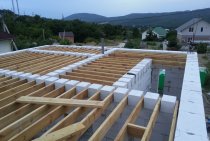Benefits of infrared floor heating
Film infrared floors cannot be called ideal compared to other floor heating systems, since according to some criteria they still lose to traditional schemes. However, their benefits are impressive.
- Possibility of heating local areas. Due to the possibility of arbitrary placement of heaters, it is possible to heat only surfaces located near resting places or on the aisles. This makes it possible to rationally use the material during installation, as well as save energy during the operation of the system.
- Unlike other heating systems, infrared floors act directly on the surfaces of heated objects and do not dry the air in the room at all. For this reason, this method of heating is more preferable in residential areas.
- The cost of a set of warm infrared floor with all the necessary elements (IR film, thermostat, wiring, temperature sensor and substrate) is much lower than the price of materials for arranging a cable or water floor heating system. In addition, due to the reduction in the cost of building materials and tools, the cost of installation is significantly reduced.
- Infrared heating systems are not afraid of frost, so even a long absence of owners during the winter months will not affect their performance when turned on. This feature allows you to install such floors in cottages and country houses.
- In addition to the previous point, let's add the low thermal inertia of infrared heating, which allows you to achieve a comfortable temperature immediately after switching on. An invaluable advantage for periodically heated rooms, isn't it?
- Due to the high efficiency of carbon heaters (their efficiency is more than 80%), as well as the possibility of heating by radiation, when using infrared floors, electricity costs are significantly reduced.
- Possibility of installing underfloor heating film not only in private houses, but also in ordinary city apartments. Firstly, you don’t have to worry about the possibility of flooding neighbors living below, and secondly, centralized heating systems are not designed to supply such systems with energy, so it is unlikely that it will be possible to obtain permission for reconstruction.
- High installation speed. Even if you have to remove and then reinstall the underfloor heating, the work can be done in a couple of days. With other floor heating systems, this number will not work - you will have to wait at least one to two weeks for the concrete screed to fully set. Installation example - see the video below:
- Do-it-yourself installation possibility. Laying and connection of film heaters does not require special training and can be done by hand. Pluses also that for arrangement of a heat-insulated floor neither the special tool, nor skills of work with it is required.
- The infrared energy emitted by carbon elements is completely identical to that which comes from our Sun.
- Warm floors contribute to uniform heating of the premises along the entire height, while maximum comfort is achieved in their lower part. Remember the medical call to “keep your feet warm”? With film heaters, following this recommendation is not difficult at all.
- Possibility of quick dismantling of heaters. If necessary, the infrared heating system can be dismantled and used elsewhere. In the case of water or cable floors, it will be necessary to break the concrete screed, which will inevitably lead to damage to the system elements.
To complete the picture, we recommend that you familiarize yourself with the following video, in which the author conducts a truly merciless testing of the infrared floor:
As you can see, infrared floor heating has many advantages.However, it is still too early to talk about complete perfection, and the reason for this is the disadvantages of such systems.
Videos heating film 12 volt
heating film 12 volt Video
…
2 years ago
The infrared film from China performed well in a real test on the balcony, after about an hour of heating ...
…
4 years ago
1.) Save energy, high efficiency. 2.) It is not the air and the ceiling that warms, but objects, like the sun. 3.) Convenient to place,…
…
2 years ago
In this video, we decided to see what happens if you leave the film plugged in without a thermostat, ...
…
10 months ago
Visual work of the heating infrared film.
Disadvantages of film infrared systems
Information about the shortcomings of IR systems will provide a complete picture of this heating method. In addition, it would be dishonest to hide their wrong side, because any defect under a certain set of circumstances can cause a refusal to use IR film. So, the disadvantages of using infrared floor heating:
- The system of carbon heaters operates from a 220V network, while the current strength is a potentially dangerous factor. Even though there is a ground connection and an automatic residual current circuit breaker, there is a risk of electric shock.
- Despite the fact that infrared film is one of the most efficient electric heating systems, it loses a lot to a water-heated floor in terms of efficiency. This gap increases even more if the circuit of the latter is heated using natural gas.
- Dependence on electricity. Of course, you can forget about the reliable operation of the equipment with frequent power outages. Of course, someone may object that the floor heating water circuits also function thanks to electric circulation pumps. However, in the event of a power outage, the low power of such a pump allows it to be connected via an inverter to a car battery or a low-power generator. IR heaters will require a lot of generating power and high fuel consumption, so this option will not be practical.
- Locations of infrared heaters must not be blocked by stationary furniture or equipment. The initial laying of the IR film will naturally take this requirement into account. But what if you want a change of scenery? Dismantling the floor and reinstalling? Even if a laminate is laid on top, the process cannot be called simple. Of course, the manufacturer recommends in such cases to leave an air gap between the furniture and the floor, but will the sofa or wardrobe look aesthetically pleasing when they are installed on wooden bars?
- Laying infrared heaters under soft floor coverings requires an intermediate layer with high mechanical strength. It uses plywood, gypsum-fiber or wood-fiber boards, chipboard, OSB, etc., which leads to additional financial expenses. In the case of cable or water heating methods, laying linoleum or carpet does not require any complication of the design.
A careful analysis of all the existing advantages and disadvantages of infrared floor heating systems suggests that they are the future. Take a close look at the pros of IR heaters and take a critical look at their weaknesses. The former can hardly be overestimated, because most of them are associated with the advantages of technology and ease of installation, while almost all the disadvantages can be eliminated by a clear calculation during planning and proper operation. In any case, when planning the installation of a warm floor, you need to weigh the pros and cons. Only then will he please not only with cozy warmth, but also with reliable economical work.
Heating film - Heating film
INFRARED HEATING FILM FOR SUPPLY VOLTAGE 12 Volt.
The module can be cut along the length, but it is necessary to isolate the cutting line, the module cannot be cut along the width.
We offer two types of 12V heating film:
Heating film Hot-Film (South Korea)
| Mains voltage | 12 V |
| Power consumption | 197 W/m2 |
| Maximum film heating temperature | 45 - 50o C |
| Electromagnetic radiation | Hardly ever |
| Infrared wavelength | 5 - 20 microns |
| Film width | 30 cm |
| Length of one film section (module) | 50 cm |
| Film thickness | 0.39 mm |
| Guarantee period | 20 years |
| Life time | over 30 years |
Heating film Power Plus (South Korea)
| Mains voltage | 12 V |
| Power consumption | 130 W/m2 |
| Maximum film heating temperature | 44o C |
| Electromagnetic radiation | Hardly ever |
| Infrared wavelength | 5 - 20 microns |
| Film width | 17 cm |
| Length of one film section (module) | 12 cm |
| Film thickness | 0.39 mm |
| Guarantee period | 20 years |
| Life time | over 30 years |
Where and how can a heating film for a voltage of 12 volts be used?
1. Heated car seats.
Depending on the size of the car seat, you can use a heating film with the appropriate module size: 17 x 12 cm or 30 x 50 cm. In addition, the module itself can be cut to length to obtain the required size. In this case, it is additionally necessary to completely insulate the entire side of the heating film along which the module was cut. If the entire modules are used, then it is necessary to insulate only the exit point of the copper strip on the cut line (4 such areas for insulation).
For example, a film with a module size of 30 x 50 cm can be cut into two parts (the length of each segment of the module can be selected for a specific chair), you will get two pieces of film - for heating the seat and back of the chair. It is necessary to connect the film segments to the on-board network in parallel.
The power consumption of one module (30 x 50 cm) of the heating film is 30 watts, which is much less than that of other analogues.
More details can be found here.
2. Heating of the fuel tank and fuel filter of a car with a diesel engine.
| Anyone who is involved in the operation of diesel vehicles knows what problems one has to face in winter, and during the transition period (autumn / winter) there are quite a few problems, because. usually at our gas stations they sell winter diesel fuel only with the onset of frost. And what to do if, with the onset of frost, summer diesel fuel remains in the tank? There is a solution - with the help of a heating film, you can organize heating of the fuel tank and fuel filter. More details can be found here. |
3. A 12V heating film can also be used for space heating where 220V is not recommended or appropriate.
For example, there is a desire to make a warm floor in the bathroom, but there is no desire to make repairs. In this case, you can use a heating film with a 30 x 50 cm module by simply placing it under the mat. The voltage of 12 volts is safe.
In addition, we already have orders for space heating. It turns out that there are craftsmen who, having installed solar panels and a wind generator, want to be able to heat the premises from a voltage of 12 volts.
Our prices can be found here
Dear Clients!
We kindly ask you not to come to our office without agreeing a meeting time - there may not be anyone in the office. You have to work on objects.

